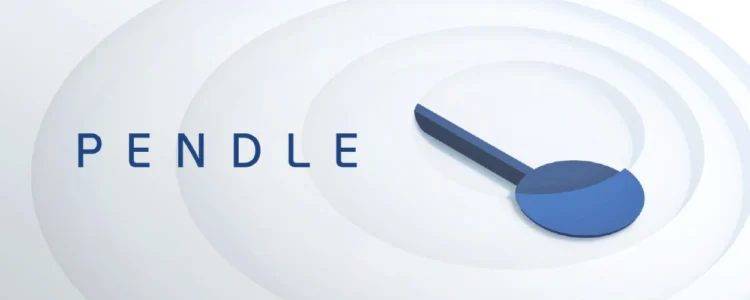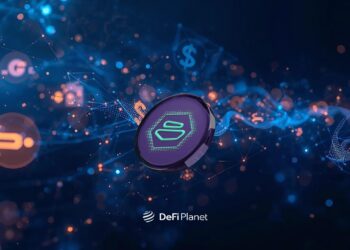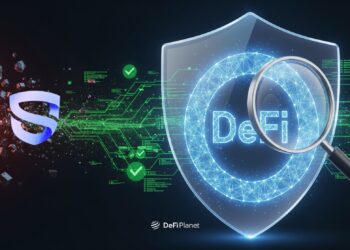The DeFi space is no stranger to big ideas and bold promises, but with numerous new concepts emerging, it’s challenging to determine which ones will stand the test of time. One of the most intriguing innovations to come out of DeFi is tokenized yield, an approach that promises to revolutionize how we earn and manage returns on our crypto assets.
Pendle Finance is at the forefront of this shift, offering a unique way to tokenize and trade yield-generating assets. But is tokenized yield the next big thing, or just another hype-driven trend? Pendle’s strategy has the potential for high yields, but how sustainable is it?
In this review, we’ll dive into Pendle’s tokenized yield model, explore how it works, and weigh its potential to change the way we earn in DeFi. Let’s explore whether Pendle is paving the way for a new DeFi frontier or simply riding the wave of the latest trend.
What is Pendle Finance and How Does it Work?
Pendle Finance is a DeFi platform that brings a new twist to earning from crypto: tokenizing yield. It allows you to separate the yield (the earnings) you receive from your crypto assets, like staked tokens or lending positions, from the assets themselves.
IMG TXT: Pendle Finance Interface. Source: Pendle Finance
This means you can trade the future earnings of your assets while still retaining the original cryptocurrency.
Yield tokenization is the process of turning the future earnings (or yield) from your crypto into a separate token. Here’s how it works:
- Ownership Token (OT): This represents the actual crypto asset you own, like a staked token or a liquidity provider token. It gives you long-term exposure to the value of that asset.
- Yield Token (YT): This represents the future earnings (or yield) generated by the asset. You can trade, sell, or use this token for liquidity without touching your original asset.
This system allows you to retain your asset while also utilising or selling the earnings it generates.
How Pendle’s Tokenized Yield Strategy Works
Pendle Finance takes a unique approach to DeFi by allowing users to separate the ownership of an asset from the tokenized yield it generates. This strategy provides greater flexibility for investors and traders who wish to manage risk, lock in yield, or speculate on interest rates, all while retaining their original crypto assets.
At its core, Pendle’s strategy revolves around yield tokenization. This means breaking down a yield-generating asset into two distinct parts:
- Principal (ownership of the asset)
- Yield (future earnings from the asset)
Pendle wraps supported yield-bearing tokens (like stETH or aUSDC) and splits them into two new tokens that users can trade or utilise in other DeFi strategies.
Pendle has a unique setup that gives users more control over their DeFi earnings, and it all starts with two key components: the PENDLE token and the oToken system.
The PENDLE token is the main token for the platform. It’s used for governance, meaning holders can vote on decisions that shape how Pendle evolves. It’s also used to reward users, especially those providing liquidity. If you stake your PENDLE tokens, you get something called vePENDLE in return. This gives you a more decisive say in the platform’s future and earns you higher rewards, especially when it comes to managing where liquidity flows.
But the real innovation lies in Pendle’s oToken system. This is where Pendle breaks down yield-bearing assets into two separate parts. The first part is the Principal Token (PT), which represents the original value of your asset. The second part is the Yield Token (YT), which represents the future earnings or interest that the asset will generate.
Let’s say you have stETH, which earns yield over time because it’s staked Ethereum.
You deposit your stETH into Pendle. Pendle converts it into a special tokenized version called an oToken (ownership token). This oToken is then split into:
- PT (Principal Token): Represents the underlying stETH.
- YT (Yield Token): Represents the future yield you’ll earn until the maturity date.
Now, you can sell your YT for instant earnings, trade it, or hold it and collect the yield. Meanwhile, your PT still gives you access to the stETH after maturity.
Comparison with Competitors: How Does Pendle Stack Up?
Here’s a clear side-by-side comparison of how Pendle Finance compare to existing competitors:
How Pendle Finance compare to existing competitors
Feature | Pendle Finance | Yearn Finance | Aave |
| Core Functionality | Tokenizes future yield by splitting assets into Principal Tokens (PT) and Yield Tokens (YT), enabling trading or locking in fixed yields. | Aggregates yields from various protocols, optimizing returns through automated strategies. | Decentralized lending and borrowing platform with variable/stable interest rates and features like flash loans |
| Yield Strategy | Lets users lock in fixed yields or speculate on yield by trading YT tokens. | Moves funds across protocols for best returns using automated vault strategies. | Offers variable and stable interest rates; users earn by supplying to liquidity pools. |
| Supported Assets | Supports assets like aUSDC and cDAI, with plans to include LP tokens, staking tokens, and vaults. | Integrates with various protocols and supports a wide range of assets through vaults. | Broad range of crypto assets and stablecoins supported. |
| Governance Token | PENDLE used for governance and incentives. | YFI allows participation in governance and fee sharing. | AAVE used for governance, staking, and protocol incentives. |
| Unique Strengths | Introduces fixed yield strategies and a secondary market for yield via tokenization; innovative approach. | Automated yield optimization; great for passive income seekers. | Advanced features like flash loans and credit delegation; strong risk controls. |
How Pendle Affects DeFi Ecosystem Growth
Pendle Finance is offering more than high yields; it’s reshaping how DeFi works behind the scenes.
1. Unlocks More Liquidity
Pendle enables people to trade the future yield from their assets, thereby increasing activity and cash flow within the DeFi space.
- More capital in motion: Instead of locking assets for months, users can now sell their yield upfront or trade it.
- New yield markets: Creating a marketplace for future returns improves how yield is priced and accessed.
2. Transforms Yield Farming
Traditional yield farming means locking up assets and hoping for high returns. Pendle gives users more control.
- Choose fixed or floating yield: Lock in guaranteed income or take a bet on yield going higher.
- Manage risk better: Users can hedge against rate drops or utilise Pendle as part of a broader investment strategy.
3. Brings Smarter Asset Management
Pendle Finance introduces building blocks that advanced DeFi users and protocols can use.
- Composable tokens: Yield tokens and principal tokens can be reused in other DeFi strategies, allowing for greater flexibility and efficiency.
- Set-and-forget options: Strategies can be automated, making it easier for asset managers or DAOs to use.
4. Introduces “Liquid Yield”
Pendle is one of the first protocols to turn future yield into something you can buy and sell at any time.
- Accessible to everyone: Small investors can now access fixed-income products usually reserved for pros.
- Builds a dynamic yield marketplace: This opens the door for more innovation around how we earn and trade yield in DeFi.
Challenges and Limitations of Pendle’s Tokenized Yield Strategy
While Pendle’s tokenized yield model brings innovation, it also faces a few real-world challenges that could impact adoption and long-term success:
Challenges and Limitations of Pendle’s Tokenized Yield Strategy
- Complexity for New Users
- Limited Asset Support
- Market Liquidity Risk
- Smart Contract Risk
- Regulatory Uncertainty
- Yield Prediction Volatility
1. Complexity for New Users
Understanding how yield tokenization works and managing two different tokens (PT and YT) can be overwhelming for DeFi newcomers. This complexity can create a steep learning curve, slowing down adoption among everyday crypto users.
2. Limited Asset Support
Pendle currently supports a select range of yield-bearing assets, which limits its reach and utility across broader DeFi ecosystems. Until more tokens and protocols are integrated, its growth potential could remain capped.
3. Market Liquidity Risk
Because Pendle relies on secondary markets to trade yield tokens, low liquidity could lead to poor pricing and higher slippage. This makes it more difficult for users to enter or exit positions efficiently, especially during volatile market periods.
4. Smart Contract Risk
As with any DeFi protocol, users are exposed to potential bugs or vulnerabilities in Pendle’s smart contracts. Even with audits, exploits can still occur, and users may lose funds if critical bugs are exploited.
5. Regulatory Uncertainty
Tokenized yield might raise questions with regulators, especially in regions where fixed income and derivatives are heavily monitored. Unclear regulations could limit Pendle’s expansion or lead to compliance challenges in key markets.
6. Yield Prediction Volatility
Future yield is never guaranteed; if actual returns fall short of what users expected or paid for, it could lead to losses. This introduces risk, especially for users who purchase tokens based on overly optimistic yield forecasts.
All Hype or High Yield?
Pendle Finance has introduced a fresh way of handling yield in DeFi by tokenizing yield-bearing assets. This approach has grabbed attention for its flexibility and innovation. However, it remains unclear whether this model is sustainable in the long run.
Looking ahead, Pendle could solidify its spot in DeFi if it can grow its offerings and integrate more yield-bearing assets. Expanding liquidity and making the platform more user-friendly could help it gain more traction.
If Pendle continues to innovate and adapt to market changes, it has the potential to become a key player in the future of DeFi. But, like any new project, it will face competition and regulatory challenges that could affect its long-term success.
Disclaimer: This article is intended solely for informational purposes and should not be considered trading or investment advice. Nothing herein should be construed as financial, legal, or tax advice. Trading or investing in cryptocurrencies carries a considerable risk of financial loss. Always conduct due diligence.
If you would like to read more articles like this, visit DeFi Planet and follow us on Twitter, LinkedIn, Facebook, Instagram, and CoinMarketCap Community.
Take control of your crypto portfolio with MARKETS PRO, DeFi Planet’s suite of analytics tools.”





















